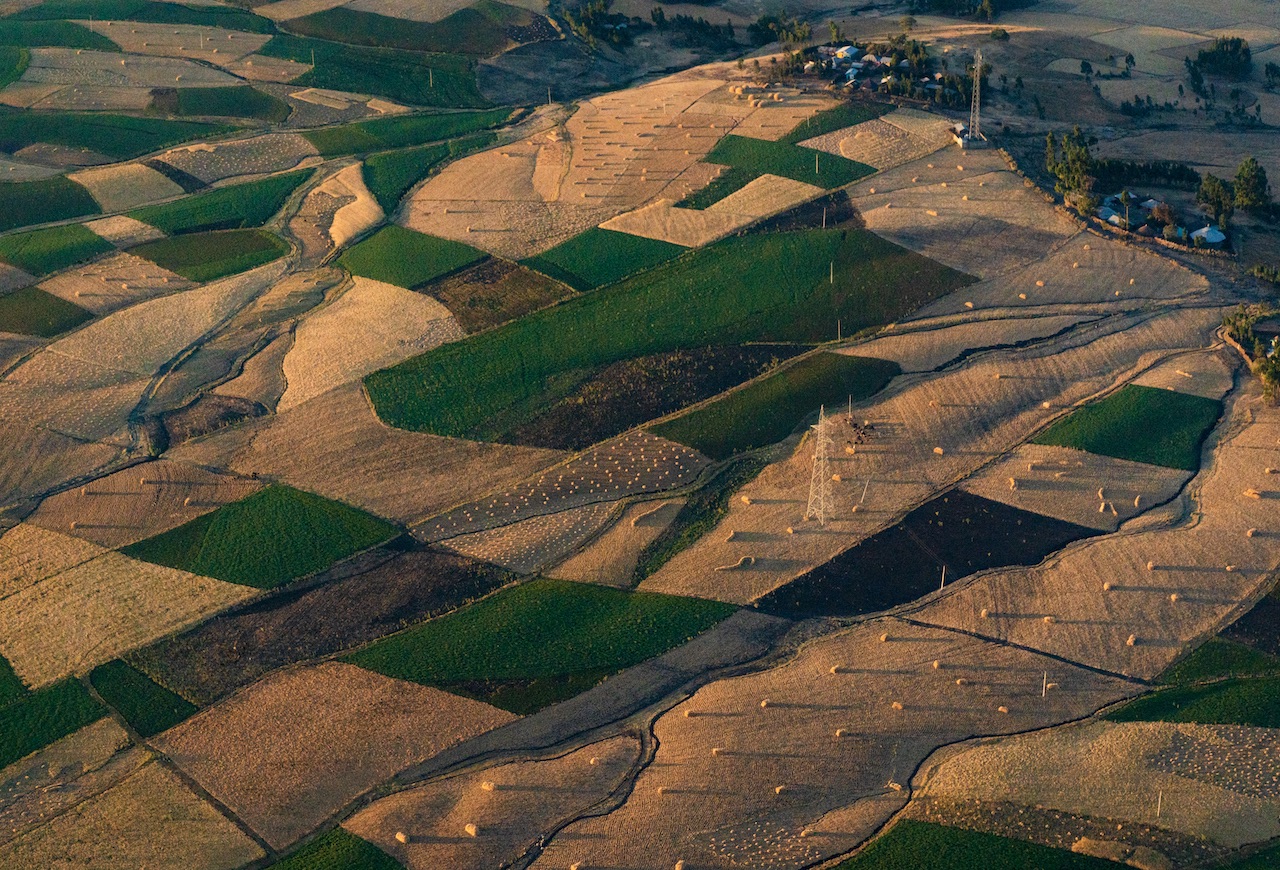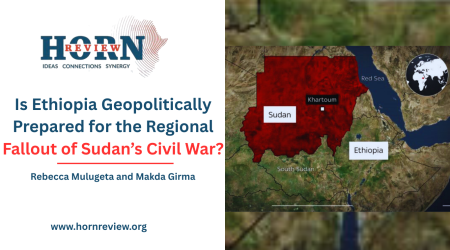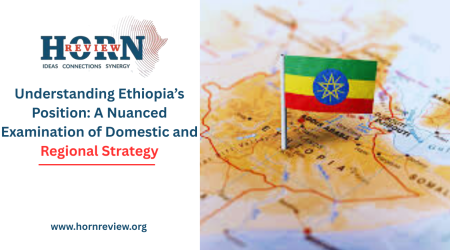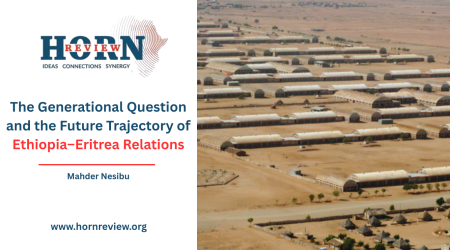
13
Aug
The Agrarian Question and the Future of Capitalism in Ethiopia
In Ethiopia, where over 80 percent of the population relies on agriculture, the land is not merely soil; it is the cradle of empires, revolution, and aspiration. The heartbeat of the nation has always been rural, and its destiny has always been tied to how that rural heart beats in harmony or discord with the wider economy. The future of the country’s capitalism, and indeed its national stability, will be determined not in boardrooms or stock markets, but in the furrows of its farmland and the policies that shape them.
The term “agrarian question” was coined by Karl Kautsky, a German Marxist thinker who saw agriculture as the decisive battlefield for a nation’s economic future. In Marxist and political debates, the agrarian question asks how agriculture in pre-capitalist societies transitions to capitalist relations of production and whether that transition supports or undermines industrial growth. For Ethiopia, the capitalist transformation depends on resolving its agrarian question: the challenge of transforming agriculture in a way that generates surplus, modernizes rural society, and lays the foundation for industrial growth without deepening inequalities. This is not just an economic puzzle; it is a philosophical one about how a society feeds itself while it remakes itself.
The Land as the Foundation of Capitalist Transition
Ethiopia’s land is not empty space to be monetized; it is a living social fabric, with ownership and cultivation patterns deeply embedded in history. From the feudal gult system of the imperial era, to the radical land nationalization under the Derg, to the current state leasehold framework, each regime has sought to solve the agrarian question in its own image. Yet the structural challenge persists: agriculture remains largely subsistence-based, productivity is low, and rural poverty traps millions in cycles of scarcity.
Capitalism requires surplus not simply to feed the cities, but to finance the very industries that pull people out of subsistence. The question for Ethiopia is whether its agriculture can generate that surplus without repeating the destructive paths of other societies, where rural communities were stripped bare to fuel urban and industrial expansion. This is where philosophy meets policy: the state must decide whether it will see rural Ethiopia as a foundation to strengthen or a resource to exploit.
Lessons from Abroad: Multiple Paths to Transformation
China’s experience looms large. After 1949, the Chinese Communist Party collectivized agriculture, then, following famine and stagnation, reversed course with the Household Responsibility System in the late 1970s. This reform kept land in collective ownership but allowed households to farm independently, unleashing productivity and creating the surplus that fed China’s industrial boom. The lesson here is not blind imitation. Ethiopia’s land tenure history and social fabric are different, but recognition that rural reform can be the engine, not the victim, of industrialization.
Japan’s Meiji era offers a different model: after World War II, sweeping land reforms broke up large estates, redistributed land to tenant farmers, and invested heavily in rural infrastructure and education. This created a productive, market-oriented rural class that could both supply food and participate in industrial expansion.
South Korea, in the 1960s and 70s, treated land reform as a national security imperative, breaking up large estates and creating a broad base of rural prosperity that fed into rapid industrialization.
Ethiopia must follow cautionary steps. In many countries, land liberalization without strong state support created speculative land grabs, marginalizing smallholders and deepening inequality. Ghana’s shift towards export-oriented agriculture boosted GDP but increased vulnerability to global price shocks. Ethiopia can draw from these examples a principle: agricultural transformation succeeds when rural producers are empowered as economic actors, rather than dismantled as obstacles to “modernity.”
The Danger of Skipping the Agrarian Stage
One major problem for policymakers is to leapfrog directly into urban-industrial development, betting on special economic zones, manufacturing hubs, and foreign investment while leaving agriculture as a neglected background sector. This has often been justified by the theory that industrial growth will “pull” agriculture forward. But history shows that without a healthy, surplus-generating agricultural base, industry becomes dependent on imports, vulnerable to food price shocks, and politically unstable.
Ethiopia’s approach oscillates between promoting smallholder productivity and encouraging large-scale commercial farms. Both have their logic, but without an integrated national strategy, they risk working at cross purposes. Due to this, the promise of agricultural-led industrialization remains unfulfilled because surplus generation is inconsistent, rural-urban migration is poorly managed, and industrial job creation lags.
The EPRDF’s Agricultural Development-Led Industrialization (ADLI) strategy recognized this interdependence in theory, but in practice was uneven, often more rhetoric than structural transformation. Going forward, Ethiopia must not inherit the policy framework and the unresolved contradictions that failed during the EPRDF era. If it is ignored, Ethiopia risks becoming yet another country caught between underperforming farms and fragile, foreign-dependent industry.
Beyond Economics: The Agrarian Question as a Social Contract
The agrarian question is not simply about output and markets; it is about the social contract between state and peasantry. In Ethiopia, the peasant has historically been both the tax base and the soldier, the source of legitimacy and the potential rebel. When the land is seen as a public trust, one that sustains communities and binds them to the nation, rural policy becomes nation-building. When it is seen merely as an economic asset, rural discontent festers.
This is why reforms must be as much about rights as about yields: secure land use rights, fair access to markets, investment in rural education and health, and infrastructure that links rural to urban economies. Without this, modernization becomes extraction, and the countryside becomes a breeding ground for discontent.
Ethiopia’s Strategic Choices Today
Ethiopia stands at a historical crossroads. Climate change is intensifying drought cycles. Population growth is putting unprecedented pressure on arable land. Global commodity markets are volatile, and political stability is fragile. In this environment, agricultural transformation is not optional; it is existential.
Recommendations and Lessons for the Present
The Prosperity Party, as the ruling force, has a unique opportunity and responsibility to address this century-old question without repeating past mistakes. This would mean:
1. Secure Tenure Without Full Privatization – Adopt long-term transferable leases or usufruct rights that give farmers security and investment incentives without triggering speculative dispossession.
2. Rural Infrastructure as Industrial Policy – Treat roads, irrigation, and rural electrification not as welfare but as the backbone of industrialization.
3. Integrate Smallholders into Value Chains – Use cooperative models to connect small farmers to processing industries, reducing the gap between rural production and urban industry.
4. Balance Rural and Urban Employment Growth – Avoid forcing migration by creating non-farm rural industries and services.
5. Climate-Resilient Agriculture – Invest in drought-resistant crops, soil conservation, and water management to safeguard against climate shocks.
Philosophical Reflection: Capitalism Rooted in the Soil
At its core, the agrarian question is not just economic; it is philosophical. It asks: Who is the subject of Ethiopia’s modernization? Is it the rural farmer whose labor sustains the nation, or the urban investor whose capital accelerates change? Can Ethiopia chart a capitalist path that honors its rural majority, or will it follow the classic pattern where the countryside is sacrificed for urban growth?
From a political economy perspective, Ethiopia’s rural transformation is also a question of power. Land policy has always been a tool of political control. Whoever decides land access decides rural allegiance. Any reform, therefore, must balance productivity with political stability.
Capitalism in Ethiopia will not be built in the abstract; it will grow from the soil up. The agrarian question forces the country to ask: Can we modernize without uprooting? Can we generate surplus without dispossession? Can the village be part of the modern nation, rather than its casualty?
Kautsky’s insight was that the fate of capitalism in any given country depends on how it resolves its agricultural contradictions. Ethiopia’s particular path will be shaped by its history, its ecology, and its political choices but it cannot ignore the fundamental truth that without a productive, empowered rural class, the dream of industrial modernity will rest on shaky ground.
A Call to Vision
Ethiopia’s land has been the stage for emperors, revolutionaries, and reformers. It can now be the stage for a new chapter, one in which the agrarian question is not an unresolved problem but a solved foundation. To do this, Ethiopia must resist the false choice between agriculture and industry, and instead see them as mutually reinforcing.
If the current administration can recognize this and act boldly, it will not just answer an economic question; it will define the philosophical character of Ethiopian capitalism. And in doing so, it may finally turn the land from a site of endless struggle into a source of enduring prosperity. If Ethiopia can resolve it wisely, the rural majority can become the engine of national growth. If not, the same land that once cradled empires may become the arena of future instability.
By Surafel Tesfaye, Researcher, Horn Review
Further Reading:
- Kautsky, Karl. The Agrarian Question. London: Zwan Publications, 1988.
- Lenin, V.I. The Development of Capitalism in Russia. Progress Publishers, 1964.
- Bernstein, Henry. Class Dynamics of Agrarian Change. Kumarian Press, 2010.
- Byres, Terence J. Capitalism from Above and Capitalism from Below: An Essay in Comparative Political Economy. Palgrave Macmillan, 1996.
- Huang, Philip C.C. The Peasant Economy and Social Change in North China. Stanford University Press, 1985.
- Johnson, Chalmers. MITI and the Japanese Miracle: The Growth of Industrial Policy, 1925 – 1975. Stanford University Press, 1982.










